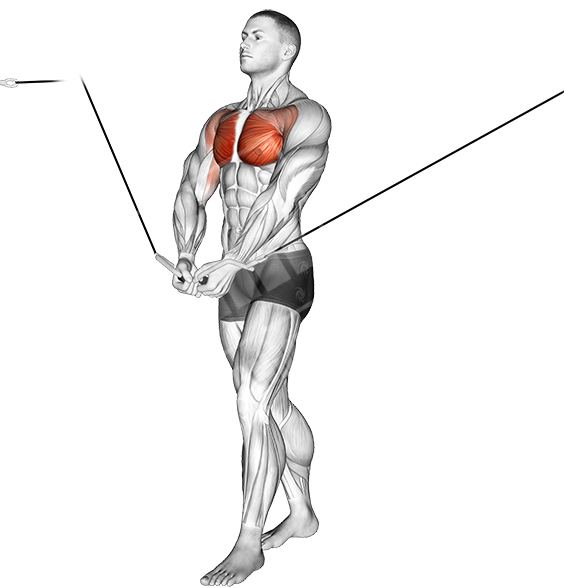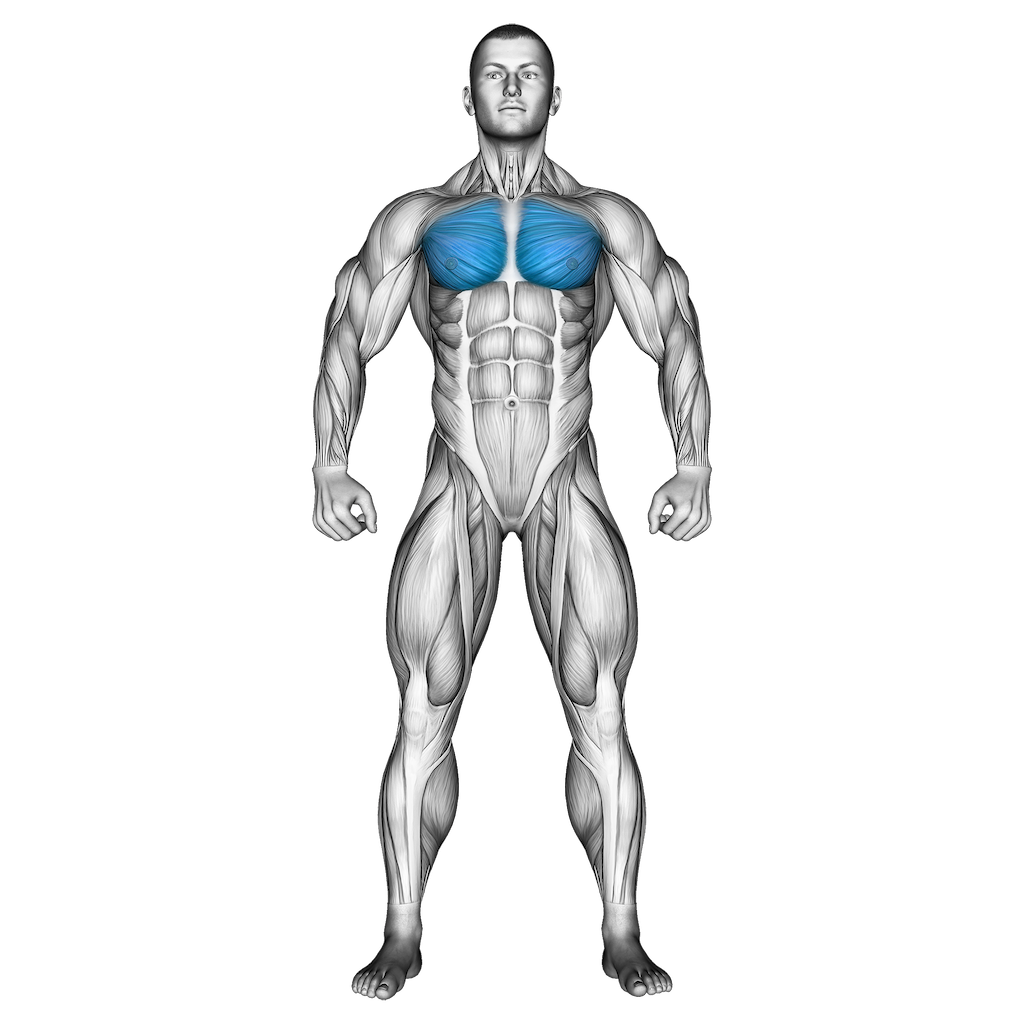Tennis Elbow Exercises

Are you an avid tennis player who has been dealing with the excruciating pain of Tennis Elbow? If so, then you have come to the right place! Here, we will look at some expert-recommended Tennis Elbow exercises that can help relieve your pain and improve your performance on the court.
With easy-to-follow instructions, these exercises will enable you to get back to playing in no time. So read along and discover ways you can strengthen and rehab your elbow quickly to ensure a speedy recovery from this painful condition.
Understand the Symptoms of Tennis Elbow
Complex in nature, tennis elbow, or lateral epicondylitis, primarily manifests as a persistent and uncomfortable pain in the forearm, typically centered around the outer elbow. This discomfort can intensify when performing activities that involve wrist and forearm movements, such as gripping objects, shaking hands, or turning a doorknob.
The pain may start gradually, worsening over time, especially if the repetitive actions that caused it continue. It’s essential to seek medical advice upon noticing these symptoms, ensuring timely diagnosis and treatment. Remember, early intervention is crucial to preventing chronic discomfort and further complications.
Improve Your Grip Strength
Hand grippers are essential tools for anyone looking to rehabilitate or prevent tennis elbow injuries. These simple devices work out the muscles in your forearms that control your grip and, by extension, the tendons in your elbow.
Regularly using a hand gripper can assist in increasing the strength and flexibility of these muscles, which can help alleviate the pain associated with tennis elbow and mitigate the risk of future injuries. Start with a lighter grip and gradually increase resistance as your strength improves. Always remember consistency is key to seeing progress with these exercises, so make sure you incorporate them into your daily routine.
Strengthen Your Forearms with Wrist Curls
To perform wrist curls effectively, sit on a chair with your forearm resting on your knee. Hold a light dumbbell with your palm facing upwards. Slowly curl your wrist up towards your body, keeping the rest of your arm stationary. Lower the weight back down to the starting position.
This exercise targets the forearm flexors, the muscles often affected by tennis elbow. Repeat this sequence 10 to 15 times and gradually increase the weight as your strength improves. Remember, it’s crucial to keep the movements slow and controlled, avoiding any jerks or sudden motions.
Use Resistance Bands to Do Reverse Curls
To perform reverse curls using resistance bands, start by standing upright, feet hip-width apart while holding the ends of the resistance band. Ensure that your palms are facing downwards and your arms are fully extended. Then, slowly curl your hands towards your shoulders, keeping your elbows stationary by your sides.
Remember to squeeze your forearm muscles at the top of the curl. Gradually lower your hands back to the starting position. This exercise effectively targets the muscles affected by tennis elbow, promoting strength and flexibility. Aim for three sets of 10-15 repetitions, ensuring a slow, controlled motion throughout to maximize the benefit.
Do Eccentric Exercises to Target Specific Muscle Groups
Eccentric exercises are a critical component of rehabilitation protocols for tennis elbow, scientifically referred to as lateral epicondylitis. These exercises focus on lengthening the muscles and tendons affected by this condition, specifically the extensor carpi radialis brevis (ECRB). An example of such an exercise is the “eccentric wrist extensor exercise.”
Begin this exercise by holding a lightweight in your hand, with your elbow supported on a table and your wrist hanging over the edge. Slowly lift the weight with your other hand to fully extend your wrist. Once fully extended, slowly lower the weight using just the affected hand, thus strengthening the ECRB tendon. These types of exercises should be performed under professional guidance to ensure correct form and to avoid exacerbating the condition.
Stretch Your Arms and Shoulders Regularly to Reduce Pain and Tension
Tennis elbow exercises are essential for those suffering from lateral epicondylitis, a condition commonly seen in people who use their arm muscles repetitively. Regular practice of these exercises can help reduce pain and improve flexibility. The “Wrist Extensor Stretch” is a popular choice, where you extend your arm in front of you and gently flex your wrist downwards, using your other hand to pull it further for a deeper stretch.
Equally important is the “Shoulder Stretch,” which involves crossing one arm across your chest and using your other hand to apply slight pressure, stretching the shoulder muscles. Remember, consistency is crucial, and these stretches should be carried out several times a day for optimum results.
Finger Stretch With Rubber Band
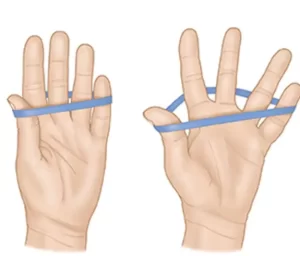
The Finger Stretch with a Rubber Band is an effective exercise to strengthen your forearm muscles and reduce the symptoms of tennis elbow. To perform this exercise, place a rubber band around your fingers and thumb. Gently stretch the band by spreading your fingers apart. Hold for about five seconds and then return to the starting position.
Repeat this 10-15 times, and do this exercise several times throughout the day. This exercise can help improve grip strength and alleviate the discomfort associated with tennis elbow. Always remember to perform these exercises within your comfort level, gradually increasing intensity as your strength improves.
Pros:
- Strengthens forearm muscles
- Improves grip strength
- Reduces discomfort associated with tennis elbow
Cons:
- It can be painful or uncomfortable if done incorrectly or too intensely
- Not suitable for those with weak hand muscles or limited range of motion
Grip
The grip is a fundamental aspect of tennis, directly impacting the player’s performance and potential risk of injury. A correct grip is essential not only for delivering powerful shots but also for preventing conditions like tennis elbow.
This repetitive stress injury often results from poor technique or overuse. Incorporating exercises targeting the forearm muscles into your training routine can help manage and prevent tennis elbow. Such exercises improve grip strength, offer better racket control, and ultimately contribute to a safer and more effective tennis performance.
Pros:
- Improves forearm muscle strength
- Better control of the racket
- Reduces risk of tennis elbow injury
Cons:
- It can be difficult to learn a correct and strong grip technique
- Requires regular practice to maintain the correct form.
Downward Wrist Stretch

The Downward Wrist Stretch is a simple yet effective exercise for relieving symptoms associated with tennis elbow. To perform this exercise, extend your arm in front of you with your palm facing upwards. Then, use your other hand to gently press down on the raised hand, bending the wrist towards the floor. You should feel a stretch in your forearm.
Hold this position for 15 to 30 seconds, and repeat on the other side if necessary. Remember to keep the arm you’re stretching fully extended for the duration of the exercise. This stretch will help alleviate tension in the forearm muscles and tendons, which are often strained in cases of tennis elbow.
Pros:
- Targets forearm muscles and tendons
- Relieves pain associated with tennis elbow
- Easy to perform
Cons:
- Not suitable for those with very tight or weak forearm muscles
- It can cause further discomfort if done incorrectly.
Wrist Curl (PALM UP, PALM DOWN)
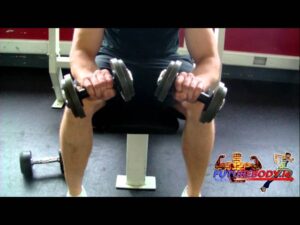
Wrist curls, both palm up and palm down, are vital exercises for relieving the symptoms of tennis elbow. These simple yet effective exercises aim to strengthen the muscles around the elbow and forearm. To perform the palm-up wrist curl, sit comfortably on a chair with your forearm resting on a table or your knee. Hold a dumbbell in your hand with your palm facing upwards.
Slowly curl your strengthening exercises towards your body, and then gradually bring it back to the starting position. Repeat this motion for 10 to 15 repetitions. For the palm-down wrist curl, the procedure is quite similar. However, instead of your palm facing upwards, you’ll start with your palm facing downwards. Lift the back of your hand towards your body, using the weight as resistance.
Repeat this motion for 10 to 15 repetitions. With each repetition, you should feel the muscles in your forearm working, which signifies the effectiveness of these exercises in mitigating tennis elbow pain.
Pros:
- Strengthens the muscles around the elbow and forearm
- Relieves pain associated with tennis elbow
Cons:
- It can be uncomfortable if done too aggressively or incorrectly
- It is not suitable for those with very weak forearm muscles.
Elbow Curls (PALM UP, PALM DOWN)
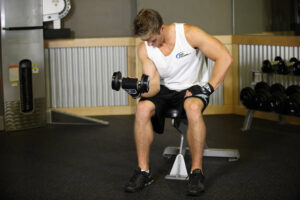
Elbow Curls, performed both with palm up and palm down, are an effective exercise in managing and preventing tennis elbow. These exercises work by strengthening the muscles and tendons around your elbow joint, reducing strain, and promoting better muscle balance.
- Stand upright, hold a lightweight in your hand, and fully extend your arm.
- Turn your palm up and curl the weight towards your shoulder.
- Lower the weight slowly, turning your palm down halfway through the motion.
- Repeat this exercise for 10-15 repetitions, ensuring to perform it on both arms for balanced strength and development.
Pros:
- Strengthens the muscles and tendons around your elbow joint
- Reduces strain on the elbow
- Promotes muscle balance
Cons:
- Not suitable for those with very weak forearm muscles
- Progressively increasing weight is necessary to further strengthen the arm muscles.
Forearm Pull (OPTIONAL)

Forearm pull is an effective exercise aimed at strengthening the muscles around the elbow to alleviate the symptoms of tennis elbow. To execute this exercise, extend your injured arm in front of you with your palm facing downwards.
With your other hand, gently pull the fingers of your extended arm back towards your body until you feel a stretch in your forearm. Hold this pose for 15-30 seconds and repeat the exercise 3-4 times a day. Remember, the key is to perform this exercise in a pain-free range of motion. If discomfort or pain is felt, stop immediately and consult with a healthcare professional.
Pros:
- Strengthens the muscles around the elbow
- Relieves pain associated with tennis elbow
Cons:
- Not suitable for those with very weak forearm muscles
- It can cause further discomfort if done incorrectly or too intensely.
Forearm Twist(OPTIONAL)

The Forearm Twist is an efficient exercise for strengthening the muscles in your forearm and reducing symptoms associated with tennis elbow. To perform this exercise, you will need a lightweight dumbbell. Start by holding the weight with your affected arm, palm facing upwards.
Gently rotate your forearm until your palm is facing downwards. Do this action slowly, maintaining control throughout the movement. Aim for 2 sets of 15 repetitions, but remember to stop if you feel any pain. This exercise is optional and should not be performed if it causes discomfort.
Pros:
- Strengthens the muscles in your forearm
- Reduces pain associated with tennis elbow
Cons:
- Not suitable for those with very weak forearm muscles
- It can cause further discomfort if done incorrectly or too aggressively.
FAQs
How often should I perform these exercises?
To get the most out of the exercises, try to perform at least 3-4 times a week. Remember to take breaks in between sets and not push through any discomfort or pain. If you are unsure about wrist upwards any of the exercises or experience increased soreness after performing them, it is best to consult with a healthcare professional.
Are these exercises suitable for other conditions?
The exercises outlined here are mainly aimed at relieving the symptoms of tennis elbow but can also be beneficial in managing other conditions that affect the forearm muscles and tendons. However, it is always advisable to consult with a healthcare professional prior to performing any wrist flexion exercise routine. They will be able to advise on the best course of action.
What if I experience increased pain after doing these exercises?
If you experience pain or discomfort while performing any of the exercises, stop immediately and consult with a healthcare professional or physical therapist. They will be able to determine whether the exercise is causing further damage and offer advice on the best way to manage your condition.
How can I further strengthen my forearm muscles?
As you grow accustomed to the exercises, try increasing the weight of the tennis ball gradually to further challenge your muscles and tendons. However, it is important that you only increase the weight when you are comfortable with the movement and no discomfort or pain is felt during or after exercising. If in doubt, seek medical forearm supported advice.
What other activities can I do to relieve tennis elbow pain?
Applying a cold compress or taking anti-inflammatory medications such as ibuprofen can help reduce swelling and discomfort associated with tennis elbow. Additionally, engaging in low-impact activities like swimming or light jogging may help alleviate some of the symptoms. As always, if you are unsure about any physical or occupational therapy activities or medications suggested here, it is best to consult with a healthcare professional.
Conclusion
I hope this article has provided a helpful overview of the exercises and activities you can do to manage and prevent tennis elbow pain. Remember to always start any exercise routine slowly and listen to your body for cues. If you experience increased discomfort or pain after performing any of these exercises, it is best to stop immediately and consult with a healthcare professional. With the right guidance, there are many ways to manage and relieve the symptoms of tennis elbow.

